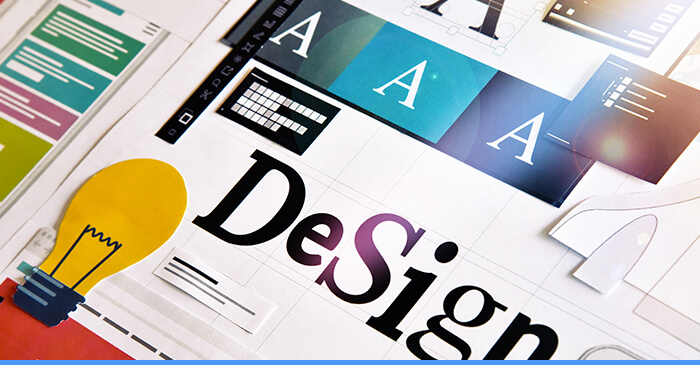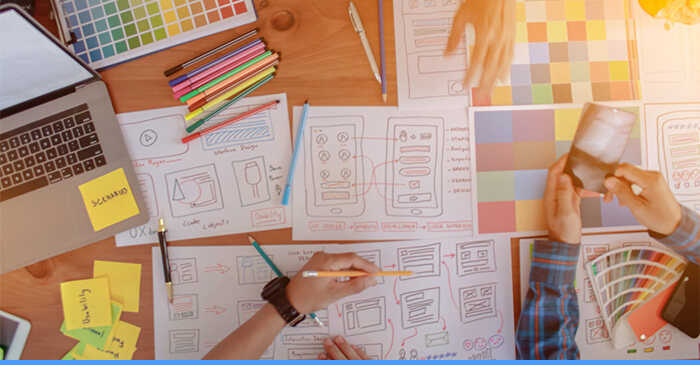
A brand’s success greatly depends on its looks and the emotions it provokes when you come across it. Every single element in the visual presentation, from the font to the background’s color, contributes to the overall brand image. That’s why nailing the appearance of your business is the most important part of its development.
Designers use different techniques and tools to plan out the design of a business. Among these, stylescape is probably the most useful and productive.
If you are new to the business world and have never heard of the term before, continue reading. The article will help you understand what stylescapes are and how to use them to execute your ideas effectively.
What is a Stylescape?
A stylescape is a carefully curated collection of different design elements, including images, textures, font styles, colors, language tone, etc., used to deliver the intended look and feel of the brand. The implication of stylescapes can cover websites, interior spaces, or generally anything that requires designing.
In the design development process, stylescapes come after a proper brand strategy has been formulated before you present the final mockups. It involves researching and understanding what the brand or the business is about and then using the visual means to deliver that essence.
Stylescapes are the bridge between the idea in the head and its final execution or optimization for the market. Not only is it a visual representation, but this representation must include all the attributes and core values of the business. It should invoke reactions (from the clients/customers of that business) that prove to be productive in growing traffic and revenue.
Why are Stylescapes Important?

Think of each time you have been in a meeting with your team where you all were discussing potential design choices. Do you remember how much of a painstaking task it is to get everyone on the same decision? Whenever someone presents a new creative solution, some members say something like, “this is not what I had in mind.” And the designing team again creates an improvised model to satisfy their concerns. But this time, someone else is displeased.
Such a continuous cycle of improvisations and revisions always results in designers doing a lot more work than they were supposed to. Moreover, all this hard work leads to practically zero progress. And somewhere in this hassle, the team is bound to deviate from what the project was supposed to be.
The problem here is not the incompetence of designers or lack of vision, but the absence of an effective communicative device. The meanings often get lost in translation. A professional designer does not speak the language of a common person. A common person does not know the right words to express their views.
This barrier can be crossed with the help of stylescapes. Here you do not try to communicate using words. The designing team presents a stylescape template as a reference point to the overall idea. From there, the rest of the members can express their opinions and edit it accordingly. Instead of vague explanations, they can point out one or two specific elements of the stylescape. Similarly, the designers do not have to rely on their guessing ability to figure out what everyone means.
In this way, stylescapes provide a transparent medium for all members to collaborate effectively. It eradicates the difference between what someone says and what they mean.
How is a Stylescape Template Different from a Mood Board?

People often confuse stylescapes with mood boards. But there are three key differences between the two.
According to the Vision
A mood board uses already existing images and visuals to express a very general idea of the design. It is made in the very early stages of a design development procedure and used as a starting point. That is why it does not need to follow the brand theme, whereas, when working on a stylescape, all the used images and other material is edited to fit the primary vision of the brand.
A Proper Structure
A mood board is never made in order to deliver a message or interact with the customers. There is no particular structure or format to it. It is a disorganized compilation of images and ideas which the final design may or may not include. On the other hand, stylescape templates are curated specifically to convey a story.
Fonts and Colors
Mood boards are never concerned with the colors or fonts of the interface. But in the case of stylescapes, each component of visual presentation is equally important. Fonts and colors are carefully integrated into the design in a way that compliments the general theme.
Tips for Designing Stylescapes
You can follow these tips to curate effective stylescape templates for all sorts of brands and businesses.
Figure Out the Requirements
First of all, you have to research the business. Determine what it stands for and what are the core values. Talk to the founders and other important members of the team. Ask them different questions that will help you figure out the central themes and vision of the brand.
These questions may include:
- What are the services that the business provides?
- Who is the targeted audience?
- What is the impression you want to establish?
Decide the Software You Will Use
The second most important is to decide which software application you will use for your stylescapes. This step holds so much significance because the software used will determine not only your workflow but also the overall vibe of the stylescape. You have multiple options in this regard. If you want variety, go with Photoshop or Illustrator. If you are after flexibility, Sketch and Adobe XD are great options.
Steal Like an Artist
We all find inspiration for our ideas and creations from somewhere. It is time we accept the fact and use it to our advantage. One of the most effective practices while brainstorming about new ideas is seeing other artists’ work. You discover different outlooks and unique concepts, which you can use for your own project.
Use of Colors
As aforementioned, a stylescape template is much more than a simple mood board. Here colors play an equally important role as other components, such as images. That is why the color palette has to be in accordance with the overall vibe of the design. Similarly, you need to make sure that you do not overdo things by using a series of different colors. Most experts recommend staying limited to only two colors: one for the background and the other for the accent.
Consistency
Consistency is one of the most important elements of any design or stylescape. You need to make sure that the viewer’s eyes move across the interface instinctively. Without consistency, the design would lack cohesiveness and captivating powers.
Conclusion
Stylescapes are a great solution to close the gap between the imagination of different team members and the designing team. It ensures everyone is involved in the process and on the same page. Moreover, it cuts down the wastage of time, resources, and manpower.
If you’re new in this area and have no idea where to start, reach out to Arturo Digital. We are a digital design and development company that takes pride in helping other businesses by providing them with the best website design and stylescapes.